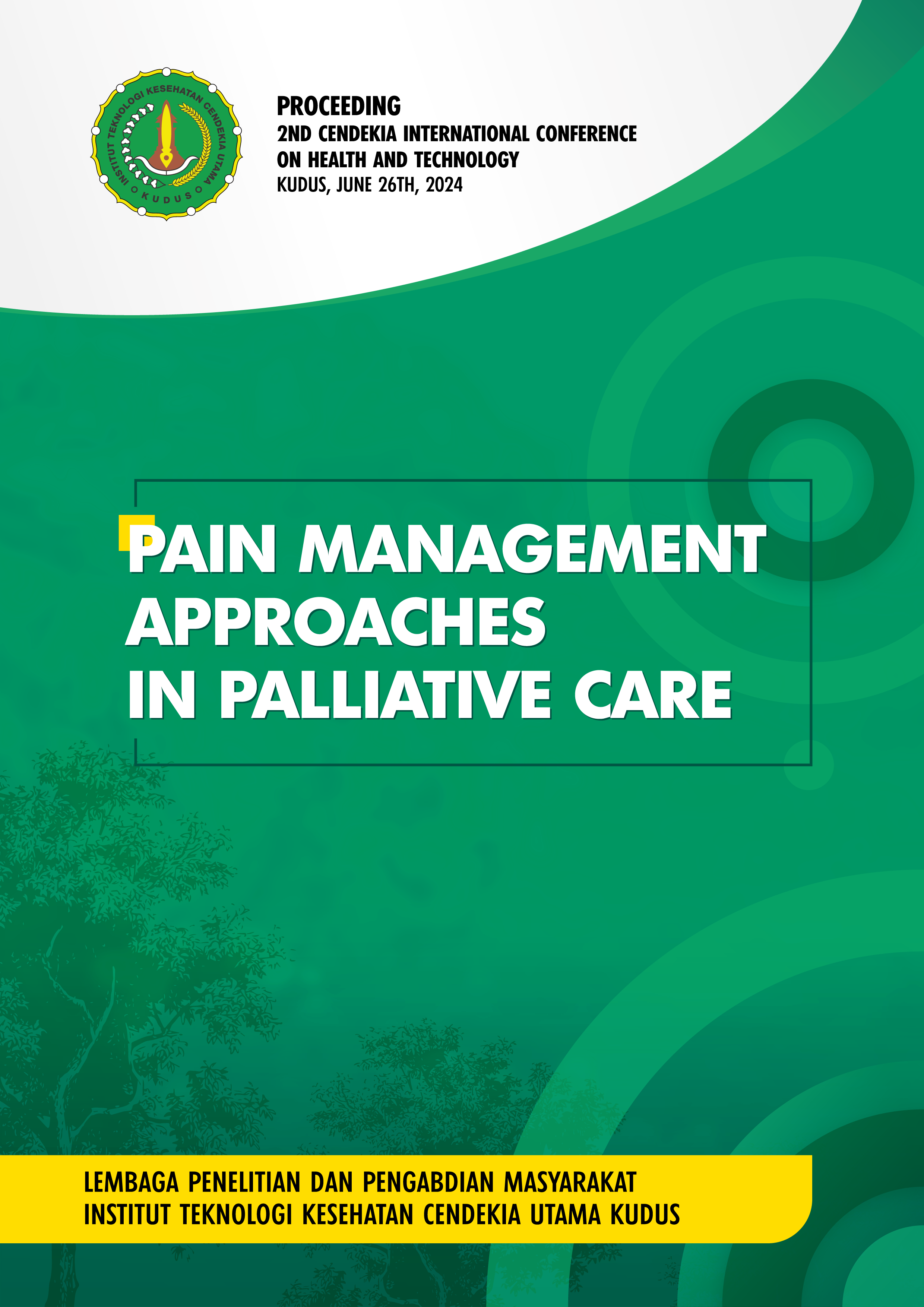Suitability of Non-Sterile Concretion Recipes in Pediatric Patients at RA Kartini Hospital: Incompatibility and Stability Study
Main Article Content
Abstract
Non-sterile concoctions are preparations that do not require a sterilization process when mixed. Non- sterile formulations may result in incompatibility, stability and drug interactions. The purpose of this study was to determine the suitability of prescriptions for non-sterile concoctions in pediatric patients regarding incompatibility, stability and drug interactions in the children's polyclinic at RSUD RA Kartini Jepara. This type of research is a descriptive study with retrospective data collection where non-sterile concoctions of pediatric patients are the independent variables and the incidence of incompatibility, stability and the dependent variables. The sample of this study was pediatric patients who received non-sterile concoction prescriptions at the Children's Polyclinic at RSUD RA Kartini Jepara. Based on this study, the results obtained were pediatric patients who most often received non-sterile concoctions, namely pediatrics who had an age range of 6-11 years as many as 75 patients (69%). The sex of pediatrics who most often received concoction prescriptions was women, 59 patients (54.7%). Most of the drug administration in pediatric patients was 2-4 drugs (71.3%). The most frequently prescribed drugs are Salbutamol, Dexamethasone, CTM and Valproic Acid. All prescriptions for pediatric patients are compatible with other drugs. There is a correlation between the number of drugs with stability. There was no correlation between the number of drugs and the incidence of drug incompatibility. There was a relationship between the amount of drug and drug stability. There is no relationship between the number of drugs and the incidence of drug incompatibility. Based on the results of the chi square test, a P value of 0.000 <0.005 was obtained, which means that there is a relationship between the number of drugs and the occurrence of drug interactions and stability and the P value - which means that there is no relationship between the number of drugs and the incidence of drug incompatibility.
Downloads
Article Details
References
Agustina, R., Annisa, N., & Prabowo, WC 2015. Potential Interactions with Prescription Drugs for Hypertension Patients at One of the Government Hospitals in Samarinda City. Journal of Science and Health, 1(4), 208–213.
Ahmad, I., Sheraz, M., & Ahmed, S. 2016. Stability of drugs and drug products. (Issue 3). Higher Education Commission.
Aztriana, Mirawati, Zulkarnain, I., Purnamasari, VM, & Abdullah, SDJ 2021. the Suitability of the Prescription of Non-Sterile Concoctions for Children At Ibnu Sina Hospital Makassar: Compatibility and Stability Study. Maritime Pharmacology Scientific Journal, 13(1): 49 –71.
Cahyaningsih, I., & Wicaksono, WA 2020. Risk Assessment of Drug Interactions in Patients with Type 2 Diabetes Mellitus. Indonesian Journal of Clinical Pharmacy, 9(1), 9. https://doi.org/10.15416/ijcp.2020.9. 1.9
Hendra, SR 2019. Risk Analysis of Drug Interactions on Children's Prescription Clinic Patients at Hospitals in Banjarmasin. Journal of Current Pharmaceutical Sceinces, 2(2), 2598–2095.
IF Nisak, AN 2022. Evaluation of the Rationality of Antiepileptics in Pediatric Epilepsy Patients in the Outpatient Installation of Dr. Soeradji Tirtonegoro Hospital, Klaten, 2018. Usadha Journal of Pharmacy, Vol. 1 No. 1 (2022): February, 66–83.
Kurniawan, BR 2013. Stability of Concoction Recipes That Have the Potential to Experience Pharmaceutical Incompatibility Stored in Well-Closed Containers. University of Surabaya Student Scientific Journal, 2(2), 1–16.
Medscape. 2022. Drug Interaction Checker. https://reference.medscape.com/
Morris, CA, Tan, B., Duparc, S., Borghini-Fuhrer, I., Jung, D., Shin, CS, & Fleckenstein, L. 2013. Effects of body size and gender on the population pharmacokinetics of artesunate and its active metabolite dihydroartemisinin in pediatric malaria patients. Antimicrobial Agents and
Chemotherapy, 57(12), 5889–5900.
NP, BH, & Dandan, KL 2019. Identification of potential interactions between drugs in general prescriptions at Kimia Farma 58 Pharmacy, Bandung City in April 2019. Farmaka, 17(April): 57 – 64.
Palupi, D. ., Setyoningsih, H., Lina, N. ., Muliana, H., Wijaya, H. ., Firmansyah, G., & Rahmawaty, A. (2022). Pharmacology textbook. Kudus: CV. Prosperous Young Feniks.
Rahman, DA, Lestari, F., & Wisnuwardhani, HA 2020. Literature study on the quality of Pulveres concoction preparations for pediatric patients. Pharmaceutical Proceedings, 6(2): 832–838.
Rimsza, ME, Hotaling, CAJ, Keown, ME, Marcin, JP, Moskowitz, WB, Sigrest, TD, & Simon, HK 2015. Definition of a pediatrician. Pediatrics, 135(4): 780–781.
Rochjana, AUH, Jufri, M., Andrajati, R., & Sartika, RAD 2019. Pharmaceutical Problems and Drug Interactions in Pediatric Patient Prescriptions: Retrospective Study at One Hospital in Bogor Regency. Indonesian Journal of Clinical Pharmacy, 8(1).
Syafitri AR, N., Faisal, M., & Indriyanti, N. 2021. Study of the Use of Off-Label Medicines in ARI in Pediatric Patients at Majene Regional Hospital. Proceedings of Mulawarman Pharmaceuticals Conferences, 14, 96–105.
Tuleu, C Costello, PF Long, IK Wong, CT and VY 2007. Pediatric formulations in practice. Pediatric Drug Handling: 43–47.
Tuloli, TS, Rasdianah, N., & Datau, M. 2022. Overview of Off-Label Drug Use in Hospitalized Pediatric Patients. Indonesian Journal of Pharmaceutical Education, 2(2), 130–142.
Turwewi, SW 2018. Evaluation of Compounding Medicine Absorption and Availability of Drugs for Pediatrics Patients in Pharmacies in Kupang City. Pharmaceutical Scientific Journal, 1(2): 53–60.
United States Department of the Army. 1953. Handbook for Pharmacy Technicians. Departments of the Army and the Air Force.
United States Pharmacopeia. 2016. Pharmacopoeial reference standards and their current lot numbers on L. December.
US Food and Drug Administration. 2017. Compounding Progress Report. Silver Springs.
VCH, W. 2019. Polymorphism in the pharmaceutical industry: solid form and drug development. R. Hilfiker & M. Raumer .
Virginia, DM 2014. Prescribing compounded preparations for pediatric patients in inpatient wards.
Journal of Research, 18(1), 56–61.
Yuwindry, I., Tm, MF, Studi, P., Pharmacy, S., Mulia, US, Studi, P., Applied, S., Health, P., & Mulia, US (2023). Profile of Chlorpeniramine Maleate Drug Use in Toddlers in Haur Gading District. 1(3), 91–95.

